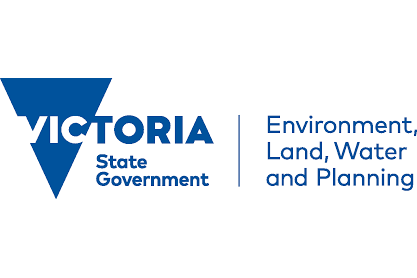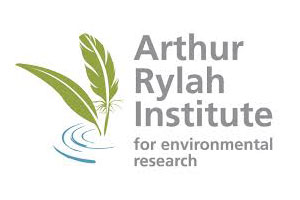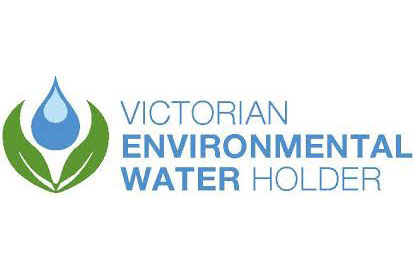
Aquatic Biota
The Aquatic Biota theme encompasses a broad range of management issues associated with threatened species, invasive species, extreme weather events and climate change. There is significant overlap with other themes.
Victoria has experienced significant changes since European settlement, with extensive clearing for agricultural and urban, rural and coastal settlements. The natural environment has suffered loss, degradation and fragmentation of both terrestrial and aquatic habitats. There is a continuing legacy of biodiversity loss, and many species and habitats are considered threatened. Numerous threats to biodiversity currently exist including changes in natural environmental processes (e.g. fire, water regimes), the introduction of exotic plant and animal species (which may prey upon and compete with native species and degrade habitat) and declines in water quality (through nutrient runoff, sedimentation and pollution). Climate change is also expected to increase the pressure on Victoria’s biodiversity, by exacerbating existing threats and introducing new ones.
Managing Aquatic Biota
Commonwealth, state and local agencies work together with communities, interest groups and landholders on a wide variety of actions to manage aquatic biota. Government agencies have roles and responsibilities related to protecting and conserving biodiversity and the environment and managing threats including through implementing a suite of legislation, strategies and plans. Victoria’s Biodiversity Plan (Protecting Victoria’s Environment – Biodiversity 2037), which acknowledges national and international biodiversity programs and agreements, includes a vision that Victoria’s biodiversity is healthy, valued and actively cared for. Biodiversity planning and habitat improvement is also incorporated within the Victorian Waterway Management Strategy, Water for Victoria and Victorian Coastal Strategy, the Freshwater Fisheries Management Plan, as well as Regional Catchment Strategies and Regional Waterway Strategies. There is also a Victoria's Climate Change Framework and Victoria's Climate Change Adaptation Plan 2017-20.
The Biodiversity Plan notes the overall shift of conservation management away from focussing on threatened species one at a time, as well as those that are most endangered. This plan focusses on management of ecosystems and ecological processes to benefit multiple species and a more preventative approach to the risk of species becoming more threatened. It is however recognised that specialised management interventions may still be required for endangered and critically endangered species. The plan includes several priority areas and initiatives relevant to aquatic environments, which relate to monitoring and research. These include undertaking practical threat management actions informed by science; identifying and filling key knowledge gaps through research and data gathering; providing easily accessible biodiversity data and information products; and using decision support tools in biodiversity planning processes. The plan also flags approaches to protect and enhance biodiversity through direct management of key threats, improving habitats, increasing genetic diversity in populations, translocations and rescuing critically endangered populations in response to catastrophic events.
Key Projects, Research and Monitoring
DELWP, CMAs, other state and local agencies together with communities, interest groups and landholders carry out many actions to protect and enhance threatened species, mitigate the impacts of invasive species, manage extreme events and attempt to build resilience of the natural environment to climate change. The activities within numerous integrated river restoration programs which address threat management, are largely covered under the other Themes. Examples of recent research and monitoring, include:
Threatened species:
- Protecting Macquarie Perch in the Goulburn-Broken catchment – monitoring the status of this threatened fish species in sites where river rehabilitation actions are underway, including pest fish reduction
- Translocation of River Blackfish in the Tarwin River: A pilot study to translocate fish into rehabilitated areas and assess its effectiveness
DELWP Biodiversity Onground Actions (Regional Landscapes and Targeted Action) funding includes a suite of projects:
- Translocations and predator control for seven endemic and threatened Victorian galaxiids species
- Assessing the salinity tolerance of Murray Hardyhead and release of juveniles to bolster existing populations
- Establishing translocated populations of Southern Pygmy Perch to reduce the risk of extinction (Fish Impoundments Supplementing Habitats (FISH) Initiative)
- Assessing the status of the Glenelg Freshwater Mussel
- Assessment of the outcomes of a five-year recovery program for re-establishing Macquarie Perch in the Ovens River (translocations, stockings, habitat restoration)
- Surveying Growling Grass Frog in the Moorabool Catchment.
Invasive species
- Carp Biomass Project to provide a robust estimate of Carp abundance and biomass in a broad range of aquatic habitats, reaches and river basins in eastern Australia
Accessible biodiversity data and information products and decision support tools
- Murray-Darling Basin Fish Survey – This is part of a basin-wide, collaborative, multi-jurisdictional fish monitoring program, which adds to the long-term data collected by the former Sustainable River Audit. The data gathered supports monitoring of fish targets within the Basin Plan, specific targets identified in the Basin-wide Environmental Watering Strategy (BWS), and documents basin-wide fish condition.
- Native Fish Report Card program – regular surveys of priority fish species in priority rivers to provide brief overviews of the health of populations, including providing information on Key Health Indicators.
- AGL desilting activities associated with hydro dam operation – regular surveys of fish (Two-spined Blackfish) and macroinvertebrates are undertaken to monitor the response to desilting.
- Population models – development of fish population models can identify the potential response of populations to a range of management scenarios. Population models are being developed for eight species of fish found in the Murray-Darling Basin, to identify the potential response of populations to a range of flow management scenarios. A population model is also being developed for the threatened Lungfish in Queensland to assess available management options.












